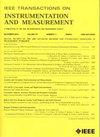Accurate and Effective Geometric Error Compensation for Ultrahigh-Precision Coordinate Measuring Machine Using Laser Tracking Interferometer
IF 5.6
2区 工程技术
Q1 ENGINEERING, ELECTRICAL & ELECTRONIC
IEEE Transactions on Instrumentation and Measurement
Pub Date : 2025-06-23
DOI:10.1109/TIM.2025.3582324
引用次数: 0
Abstract
Geometric errors in coordinate measuring machines (CMMs) significantly degrade measurement accuracy. While laser tracking interferometer (LTI)-based compensation methods are widely used due to their high efficiency, the limited precision of the existing positioning techniques restricts their application in ultrahigh-precision CMMs. To address these challenges, this study introduces an accurate and efficient geometric error compensation method that utilizes LTI positioning for ultrahigh-precision CMMs. The method begins with the development of a geometric error model that employs homogeneous transformation matrices (HTMs) to map end-position deviations to error parameters. A highly accurate and robust positioning algorithm for LTI is then designed, incorporating a two-step process: initial positioning through semidefinite programming (SDP) and fine-tuning using enhanced particle swarm optimization (EPSO). After parameter identification, geometric error compensation is applied based on the established model. The test experiments were conducted on a CMM with the nominal accuracy of激光跟踪干涉仪高精度三坐标测量机精确有效的几何误差补偿
三坐标测量机的几何误差严重影响测量精度。基于激光跟踪干涉仪(LTI)的补偿方法因其效率高而得到广泛应用,但现有定位技术的精度有限,限制了其在超高精度三坐标测量机中的应用。为了解决这些挑战,本研究引入了一种精确高效的几何误差补偿方法,该方法利用LTI定位用于超高精度三坐标测量机。该方法首先建立了一个几何误差模型,该模型采用齐次变换矩阵(HTMs)将末端位置偏差映射到误差参数。然后设计了一种高精度和鲁棒的LTI定位算法,包括两步过程:通过半确定规划(SDP)进行初始定位和使用增强粒子群优化(EPSO)进行微调。参数辨识完成后,根据建立的模型进行几何误差补偿。在标称精度为$2\:\pm \: L$ [mm]/ $400 \:\:\mu $ m的三坐标测量机上进行了测试实验。定位结果表明,该方法的距离平均绝对误差为0.10871,精度优于传统方法。此外,该方法在噪声干扰下具有良好的鲁棒性和稳定性。补偿后的精度验证结果表明,最大检测误差降至$ 0.26\:\mu $ m,长度测量误差在$0.5\:\pm \: L$ [mm]/ $400 \:\: \mu $ m以内,测量精度和操作性能均有显著提高。该研究为三坐标测量机的几何误差补偿提供了一种有效的解决方案,为工业测量应用提供了更高的性能。
本文章由计算机程序翻译,如有差异,请以英文原文为准。
求助全文
约1分钟内获得全文
求助全文
来源期刊

IEEE Transactions on Instrumentation and Measurement
工程技术-工程:电子与电气
CiteScore
9.00
自引率
23.20%
发文量
1294
审稿时长
3.9 months
期刊介绍:
Papers are sought that address innovative solutions to the development and use of electrical and electronic instruments and equipment to measure, monitor and/or record physical phenomena for the purpose of advancing measurement science, methods, functionality and applications. The scope of these papers may encompass: (1) theory, methodology, and practice of measurement; (2) design, development and evaluation of instrumentation and measurement systems and components used in generating, acquiring, conditioning and processing signals; (3) analysis, representation, display, and preservation of the information obtained from a set of measurements; and (4) scientific and technical support to establishment and maintenance of technical standards in the field of Instrumentation and Measurement.
 求助内容:
求助内容: 应助结果提醒方式:
应助结果提醒方式:


